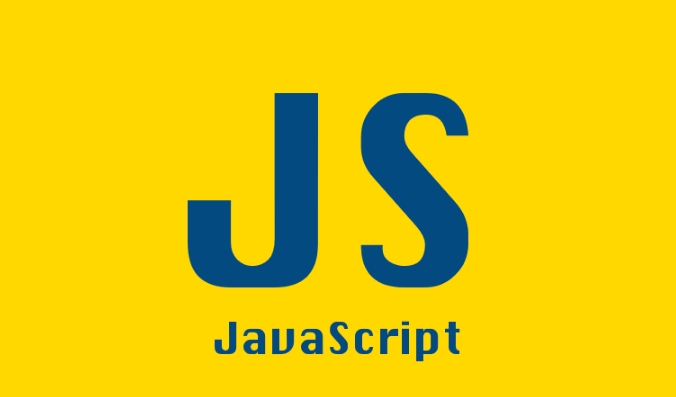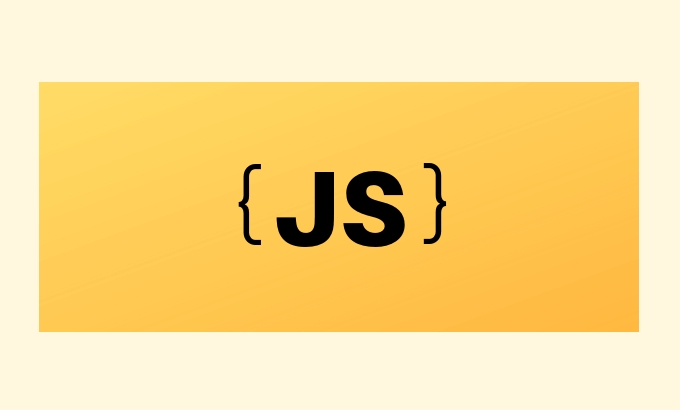Deep Dive into the JavaScript V8 Engine Optimizations
Jul 21, 2025 am 03:16 AMThe core of V8 engine's efficiency lies in optimization mechanisms such as hidden classes, inline cache and JIT compilation. 1. The hidden class speeds up the access of attributes by sharing the class information of objects with the same structure. It is recommended to initialize object properties in a fixed order. 2. Inline cache records method call information, reusing the results to improve function execution efficiency, and the parameter transfer structure should be consistent. 3. JIT generates efficient code on hotspot functions and supports dynamic fallback. Avoiding type conversion and prototype modification can improve optimization effect. Additionally, using literals, avoiding deleting properties, manipulating continuous arrays, and using primitive types also helps with performance optimization.

The V8 engine is the core of Chrome browser and Node.js. The reason why it is efficient is inseparable from the series of complex optimization mechanisms behind it. These optimizations happen quietly as we write code, and understanding them can help us write more efficient JavaScript.

Hidden Classes improves the access speed of object attributes
JavaScript is a dynamic language, and the structure of objects can be changed at runtime. However, V8 does not handle object attribute searches like traditional interpreted languages, but optimizes them through the "hidden class" mechanism.
When you create an object and add properties, V8 assigns a hidden class to the object. If another object has the same attribute order and name, they share the same hidden class. This way, when accessing properties, V8 can quickly locate memory addresses like static languages.

suggestion:
- Try to initialize object properties in the same order.
- Avoid frequent modification of the object structure, such as first defining an empty object and then gradually adding attributes.
For example:

function Point(x, y) {
this.x = x;
this.y = y;
}Better than the following:
function Point() {}
const p = new Point();
px = 10;
py = 20;The latter will cause multiple changes to hidden classes, affecting performance.
Inline Caching accelerates function calls
V8 uses inline cache to optimize the speed of object properties and function calls. Simply put, remember the result of a certain operation last time and reuse it directly the next time you encounter the same structure.
For example, if you call obj.method() , V8 will record obj 's hidden class and corresponding method location. Next time you encounter an object of the same hidden class, you can skip the search process and execute the method directly.
Common phenomena:
- If you pass objects of different structures to the same function, it may cause the IC cache to fail, which will affect performance.
- In high-frequency calls functions, try to ensure the consistency of incoming parameters.
Instant Compilation (JIT) and Optimized Fallback Mechanism
V8 starts by executing code using an interpreter (Ignition) and collecting runtime information. When some functions are executed multiple times, V8 will mark them as "hotspot functions" and then hand them over to the compiler (TurboFan) for optimization and compilation to generate more efficient machine code.
However, sometimes the optimized code does not apply to all situations. For example, if you encounter changes in data types or object structure that have not been considered before, V8 will trigger deoptimization and return to the unoptimized version to continue execution.
Key points:
- Avoid type conversion and dynamic modification of prototypes in hotspot functions.
- The more stable the internal logic of the function, the easier it is to be optimized.
- Although de-optimization is not common, once it occurs, it will affect performance and can be detected by tools (such as
--trace-deopt).
Tips: Use V8 optimization tips to write code
While you don't need to sacrifice code readability for optimization, there are some small habits that work better with V8:
- Create objects using literal objects instead of constructors (unless a large number of instances are required).
- Avoid frequent deletion of object properties (this will destroy hidden classes).
- Try to maintain continuous indexes for array operations to avoid sparse arrays.
- For numerical calculations, primitive types are preferred over wrapping objects (such as
Numbervsnew Number()).
Basically that's it. V8's optimization mechanism is very powerful, but there are also some implicit rules. After understanding them, you can pay more attention to the details when writing code to make the program run smoother.
The above is the detailed content of Deep Dive into the JavaScript V8 Engine Optimizations. For more information, please follow other related articles on the PHP Chinese website!

Hot AI Tools

Undress AI Tool
Undress images for free

Undresser.AI Undress
AI-powered app for creating realistic nude photos

AI Clothes Remover
Online AI tool for removing clothes from photos.

Clothoff.io
AI clothes remover

Video Face Swap
Swap faces in any video effortlessly with our completely free AI face swap tool!

Hot Article

Hot Tools

Notepad++7.3.1
Easy-to-use and free code editor

SublimeText3 Chinese version
Chinese version, very easy to use

Zend Studio 13.0.1
Powerful PHP integrated development environment

Dreamweaver CS6
Visual web development tools

SublimeText3 Mac version
God-level code editing software (SublimeText3)

Hot Topics
 How does garbage collection work in JavaScript?
Jul 04, 2025 am 12:42 AM
How does garbage collection work in JavaScript?
Jul 04, 2025 am 12:42 AM
JavaScript's garbage collection mechanism automatically manages memory through a tag-clearing algorithm to reduce the risk of memory leakage. The engine traverses and marks the active object from the root object, and unmarked is treated as garbage and cleared. For example, when the object is no longer referenced (such as setting the variable to null), it will be released in the next round of recycling. Common causes of memory leaks include: ① Uncleared timers or event listeners; ② References to external variables in closures; ③ Global variables continue to hold a large amount of data. The V8 engine optimizes recycling efficiency through strategies such as generational recycling, incremental marking, parallel/concurrent recycling, and reduces the main thread blocking time. During development, unnecessary global references should be avoided and object associations should be promptly decorated to improve performance and stability.
 How to make an HTTP request in Node.js?
Jul 13, 2025 am 02:18 AM
How to make an HTTP request in Node.js?
Jul 13, 2025 am 02:18 AM
There are three common ways to initiate HTTP requests in Node.js: use built-in modules, axios, and node-fetch. 1. Use the built-in http/https module without dependencies, which is suitable for basic scenarios, but requires manual processing of data stitching and error monitoring, such as using https.get() to obtain data or send POST requests through .write(); 2.axios is a third-party library based on Promise. It has concise syntax and powerful functions, supports async/await, automatic JSON conversion, interceptor, etc. It is recommended to simplify asynchronous request operations; 3.node-fetch provides a style similar to browser fetch, based on Promise and simple syntax
 JavaScript Data Types: Primitive vs Reference
Jul 13, 2025 am 02:43 AM
JavaScript Data Types: Primitive vs Reference
Jul 13, 2025 am 02:43 AM
JavaScript data types are divided into primitive types and reference types. Primitive types include string, number, boolean, null, undefined, and symbol. The values are immutable and copies are copied when assigning values, so they do not affect each other; reference types such as objects, arrays and functions store memory addresses, and variables pointing to the same object will affect each other. Typeof and instanceof can be used to determine types, but pay attention to the historical issues of typeofnull. Understanding these two types of differences can help write more stable and reliable code.
 JavaScript time object, someone builds an eactexe, faster website on Google Chrome, etc.
Jul 08, 2025 pm 02:27 PM
JavaScript time object, someone builds an eactexe, faster website on Google Chrome, etc.
Jul 08, 2025 pm 02:27 PM
Hello, JavaScript developers! Welcome to this week's JavaScript news! This week we will focus on: Oracle's trademark dispute with Deno, new JavaScript time objects are supported by browsers, Google Chrome updates, and some powerful developer tools. Let's get started! Oracle's trademark dispute with Deno Oracle's attempt to register a "JavaScript" trademark has caused controversy. Ryan Dahl, the creator of Node.js and Deno, has filed a petition to cancel the trademark, and he believes that JavaScript is an open standard and should not be used by Oracle
 React vs Angular vs Vue: which js framework is best?
Jul 05, 2025 am 02:24 AM
React vs Angular vs Vue: which js framework is best?
Jul 05, 2025 am 02:24 AM
Which JavaScript framework is the best choice? The answer is to choose the most suitable one according to your needs. 1.React is flexible and free, suitable for medium and large projects that require high customization and team architecture capabilities; 2. Angular provides complete solutions, suitable for enterprise-level applications and long-term maintenance; 3. Vue is easy to use, suitable for small and medium-sized projects or rapid development. In addition, whether there is an existing technology stack, team size, project life cycle and whether SSR is needed are also important factors in choosing a framework. In short, there is no absolutely the best framework, the best choice is the one that suits your needs.
 Understanding Immediately Invoked Function Expressions (IIFE) in JavaScript
Jul 04, 2025 am 02:42 AM
Understanding Immediately Invoked Function Expressions (IIFE) in JavaScript
Jul 04, 2025 am 02:42 AM
IIFE (ImmediatelyInvokedFunctionExpression) is a function expression executed immediately after definition, used to isolate variables and avoid contaminating global scope. It is called by wrapping the function in parentheses to make it an expression and a pair of brackets immediately followed by it, such as (function(){/code/})();. Its core uses include: 1. Avoid variable conflicts and prevent duplication of naming between multiple scripts; 2. Create a private scope to make the internal variables invisible; 3. Modular code to facilitate initialization without exposing too many variables. Common writing methods include versions passed with parameters and versions of ES6 arrow function, but note that expressions and ties must be used.
 Handling Promises: Chaining, Error Handling, and Promise Combinators in JavaScript
Jul 08, 2025 am 02:40 AM
Handling Promises: Chaining, Error Handling, and Promise Combinators in JavaScript
Jul 08, 2025 am 02:40 AM
Promise is the core mechanism for handling asynchronous operations in JavaScript. Understanding chain calls, error handling and combiners is the key to mastering their applications. 1. The chain call returns a new Promise through .then() to realize asynchronous process concatenation. Each .then() receives the previous result and can return a value or a Promise; 2. Error handling should use .catch() to catch exceptions to avoid silent failures, and can return the default value in catch to continue the process; 3. Combinators such as Promise.all() (successfully successful only after all success), Promise.race() (the first completion is returned) and Promise.allSettled() (waiting for all completions)
 What is the cache API and how is it used with Service Workers?
Jul 08, 2025 am 02:43 AM
What is the cache API and how is it used with Service Workers?
Jul 08, 2025 am 02:43 AM
CacheAPI is a tool provided by the browser to cache network requests, which is often used in conjunction with ServiceWorker to improve website performance and offline experience. 1. It allows developers to manually store resources such as scripts, style sheets, pictures, etc.; 2. It can match cache responses according to requests; 3. It supports deleting specific caches or clearing the entire cache; 4. It can implement cache priority or network priority strategies through ServiceWorker listening to fetch events; 5. It is often used for offline support, speed up repeated access speed, preloading key resources and background update content; 6. When using it, you need to pay attention to cache version control, storage restrictions and the difference from HTTP caching mechanism.






